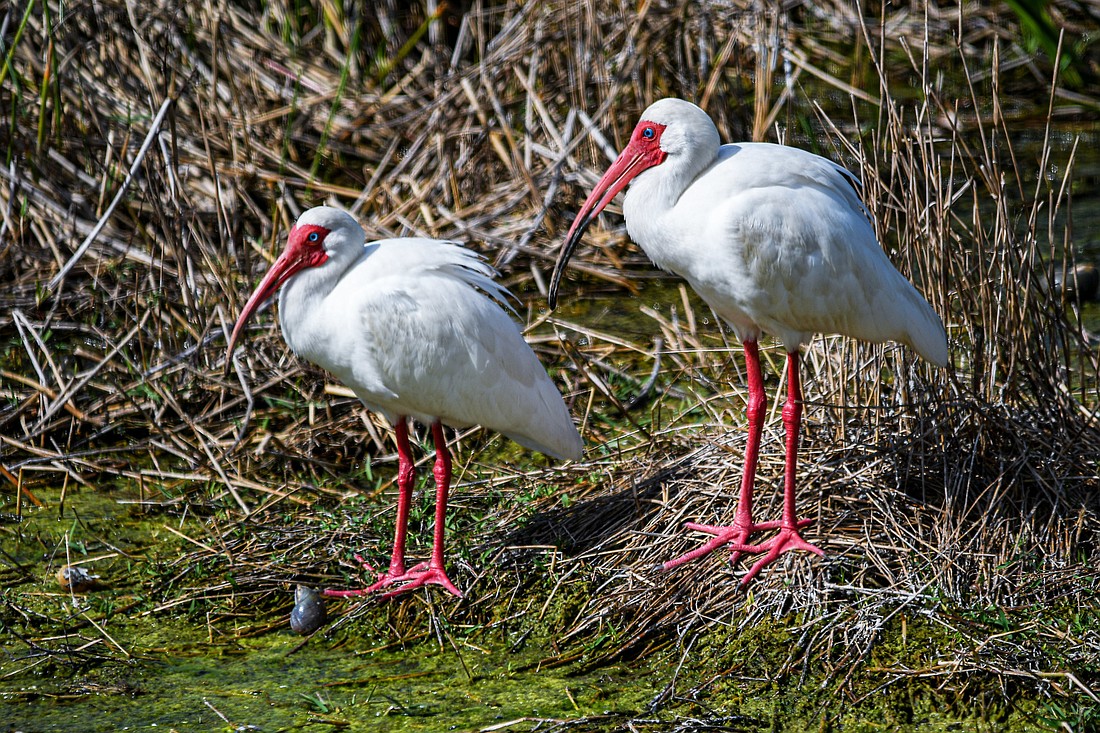- November 19, 2025
-
-
Loading

Loading

You'll often spot white ibis, which are tactile feeders, slowly walking through shallow water, probing muddy or sandy bottoms for fish and crustaceans with their long, curved reddish-orange beaks.
Though they are wading birds, they've adapted to foraging on our lawns. So spotting congregations of white ibis moving from yard to yard, frantically prodding for insects, is a common, and quite amusing, sight.
White ibis chicks hatch with a straight bill, which starts to curve downward when they are 14 days old. Initially brown, they turn white (with a black frill on their wing tips, visible in flight) when they mature. White Ibis are highly sociable, feeding in flocks and nesting in large colonies, typically in mangroves.
According to Native American folklore, the white ibis is the last bird to seek shelter before a hurricane, and the first to emerge afterwards. It was therefore seen as a symbol of optimism and danger. And, to early Florida homesteaders, white ibis were also seen as dinner.
Times being hard, “Chokoloskee Chickens," as they were called (named for an island in the Everglades, where white ibis nested in large numbers) were hunted both for their plumes and for food.
Now protected from hunting by the Migratory Bird Treaty Act, the main threat to white ibis is the loss of their wetland habitats due to development. And, as many have adapted by feeding on land, they are threatened by use of poisons such as pesticides. White Ibis are especially vulnerable to mercury, which alters their hormones, thus interfering with their reproduction and breeding. We can help protect these cheerful birds by keeping toxins out of our environment.
Save our Seabirds is a non-profit organization whose mission is to rescue and rehabilitate sick and injured birds, releasing as many as they can, while educating our community about avoiding injuries and preserving habitats.